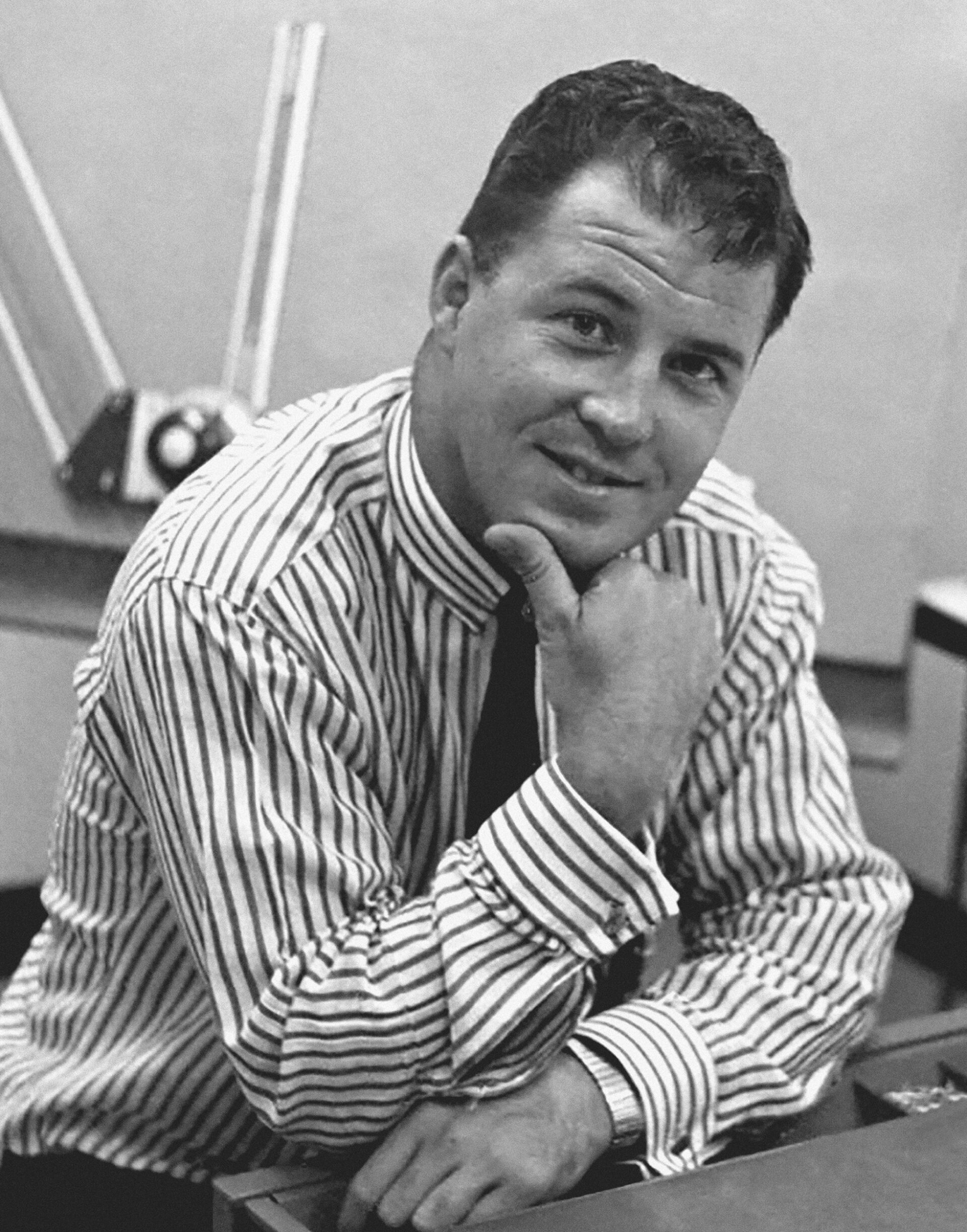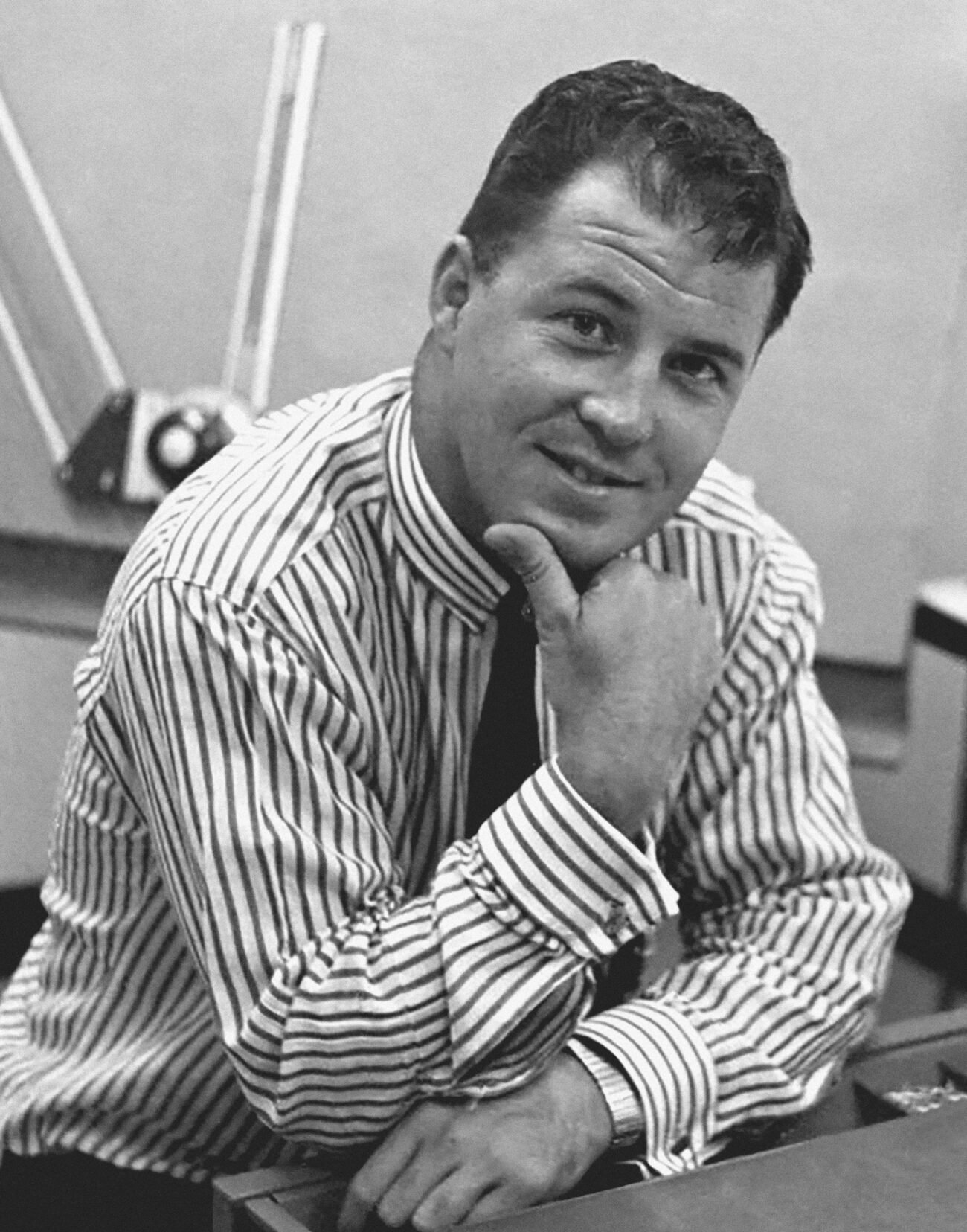Profile: GR
Born: February 13, 1940
Location: Preston, Ontario, Canada
Education:
Ontario College of Art, Toronto (1959—1963)
Studios:
University of Waterloo (UofW), Waterloo (1963—1978)
Polygon Design Limited, Waterloo (1980—2008)
Freelance, Waterloo (2008—present)
Achievements:
The Typographic Designers of Canada, Member (1963—1968)
AIGA, Member (1972—1980)
Design Professionals of Canada, Member Emeritus (1968—present)
RGD, Member Emeritus (1994—present)
Teaching:
Sheridan College, Oakville (1984—1986)
Biography
George W. Roth was born in Preston, Ontario, in February 1940. The son of a businessman, his father managed the James Gillies & Son Lumber Company in the Cambridge-Preston area, while his mother was a local school teacher. As a boy, George was a valued member of a highly respected, famous Preston Scout House Bugle Band. It was here, along with his parents encouragement, that he learned the path to success through rigorous training and participation in numerous intense marching competitions. Alongside this, George was an accomplished and highly respected hockey goalie, a passion that he would continue into adulthood. These pursuits instilled in him the virtues of hard work, dedication, and focus.
During the winter of 1958-59, in his final year of high school, George encountered academic difficulties, particularly in mathematics, which threatened his aspirations of pursuing a college education in engineering or architecture. Despite guidance counselors suggesting he might be better suited for a trade, George remained steadfast in his determination to follow his dreams.
Recognizing his son’s struggle, George’s father took an unconventional approach, and sought help from experts at an industrial psychology testing centre on St Clair Avenue, in Toronto,known for identifying individuals’ strengths, weaknesses, and professional aptitudes. Tragically, just weeks before these scheduled tests, George’s father passed away unexpectedly in his sleep at the age of 58, leaving George without his father’s guidance and mentorship. Nevertheless, George resolved to move forward and spent an entire day in Toronto undergoing extensive ability and IQ tests. The experts reinforced that a career in engineering or architecture was not suitable for him. Instead, they discovered his exceptional talent in conceptual and commercial art, recommending that he attend the Ontario College of Art (OCA). Until that moment, George had never considered, nor even heard of OCA. He had not studied art in high school, nor had any prior interest in the field. However, embracing their recommendation, he embarked on a journey that would open up an entirely new world for him.
Over the next four years, George immersed himself in painting, sculpture, printmaking, and design. During this transformative time, he had the privilege of learning from some of Canada’s most respected graphic design professionals, including Carl Dair, Frank Newfeld, Frank Davies, and Allan Fleming — each leaving a lasting impression on his young, eager mind. Their passion and expertise in the field deeply inspired him, fuelling his desire to excel in this new creative landscape. Notably, among his classmates were future luminaries such as Stuart Ash and Kenneth Caplan.
Upon completing his diploma at OCA in 1963, George found himself at a crossroads. He initially sought to further his education through a scholarship to a prestigious European program, but unfortunately, his application was not successful. So he looked closer to home. Seven years prior, the University of Waterloo had opened its doors and was now in the process of establishing its own in-house design office. Roth was offered the opportunity to head up this exciting new department, positioning George as somewhat of a trailblazer in the field, as working in-house, particularly within a university setting, was a new concept in Canada at the time. Initially he worked alone, but by the early 1970’s he would bring in two further creative members to his team, David Bartholomew and Robert Murray.
Roth had a vision to build more of a ‘design group’, to deliver every perceivable output for the university. But, as is often the case in an institutional setting, there was so much red tape and politics, and it was a concept that people just didn’t understand, so the notion was resisted.
Work at the University of Waterloo was plenty, and intense. With 42 departments to service, George’s skills were in high demand, often managing up to 20-30 projects concurrently. He was a member of the Typographic Designers of Canada (what became the GDC) and regularly attended events at the Architects Club on Park Road, in Toronto, immersing himself within the applied arts industry and rubbing shoulders with the likes of Carl Brett, Burton Kramer, Anthony Mann, Allan Fleming, Gerhard Dörrie, Gerry Moses, Peter Dorn, Laurie Lewis to name a few. Being exposed to the wider creative design industry outside of the university campus offered him the opportunity to learn from the best and to remain connected to a vibrant scene at an important time in Canada’s evolving identity.
In 1965, a highly influential and progressive seminar called ‘Design and Planning’ was developed at the University, by visiting professor and research associate, Martin Krampen. It was the first ‘National Design Seminar’ to take place at Waterloo. Speakers included Krampen himself, together with leading designers, design writers and academics. These included Anthony Mann, Jay Goblin, Edward Llewellyn Thomas and Nick and Ann Chaparos. It was through participation (and involvement in producing his first book) as a record of this seminar, that George had an epiphany moment when being introduced to project planning systems, and in particular ‘critical path’ methodology. Working in an institution, there was little time for reflection or sweating the details. But through this new way of thinking he was able to use these principles to fully manage projects from the planning, to the collation of content, to the design and proofing, and through to print production — all the while having a very conscious awareness of timescales and budgets. This philosophy would travel with him through his entire career and allowed him to really be ‘in’ control of his work, rather than it controlling him.
Through his association with Carl Dair, somebody Roth remained close friends with following his graduation from OCA, he was encouraged to create his own reference library. “You can’t rely on what you think in your head. You have to have reference.” Dair told him. In parallel to this, and through his exposure and relationships with some of the era’s greatest designers, George became heavily inspired by modernism and all it stood for — its philosophy and aesthetic resonated with him and connected with the work he was doing. This opened the doors to the pioneers in Europe, such as Armin Hofmann, Josef Müller-Brockmann, Hans Neuburg, etc. Publications such as Neue Grafik became important sources of inspiration. Not only from a visual perspective, but they really helped him to systemize the work he was doing. Roth even built his own grid systems. All drawn in India ink pen on 6 point squared sheets of mylar paper. These would be used religiously in all his work that followed.
During the late 1960s, Roth became intrigued by the potential of using computers to enhance the speed and efficiency of typesetting for print. As a pioneer in this burgeoning field of print communications, he was ahead of his time, exploring technology that would eventually become commonplace much later on. In 1967, Roth was given the opportunity to typeset a grant-funded book, using IBM punch cards for text input. MacLean Brothers, who had acquired Cooper Beatty, possessed a sophisticated mainframe computer theoretically capable of typesetting. Through a series of trial-and-error tests, Roth successfully designed the book on this computer, demonstrating his ability to problem solve and innovate. Simultaneously, Roth collaborated with Bryant Press, a Toronto printer, to determine the book’s dimensions and source acid-free paper stocks. They developed a special three-part case for the book to ensure durability and prevent deterioration on library shelves. Roth’s meticulous attention to efficiency, economy, and progressiveness was evident throughout the project. Wilfred Laurier Press published 1,000 copies of the book title, The Waterloo Directory of the Victorian Periodicals, Phase 1, selling them all within two years for $850 each. Although the project was initially planned to take ten years, it was completed in just three, showcasing Roth’s pioneering spirit and forward-thinking approach.
Building on the success of this achievement, Roth extended his methodology to the printing of the main undergraduate prospectus for the University of Waterloo. This was a monumental annual task, especially as the university itself was experiencing exponential growth each year. It provided an opportunity not only to systematize print production but also to streamline the process of collating and managing content with a single editor in the registrar’s office. By collaborating with a web-based printer, RBW in Owen Sound, and transitioning the paper stock to newsprint, Roth’s design thinking enabled the university to save approximately $40,000 on this first issue alone — not an insignificant sum in the early 1970s.
By systematizing many of these large projects using Roth’s critical path methodology, he could effortlessly monitor their progress once underway. This approach provided him with a clear understanding of each project’s status, allowing him to efficiently allocate his efforts while attending to his other day-to-day design duties — of which there were always many.
By 1978, after an illustrious 16-year tenure at the University of Waterloo, Roth had reached a pivotal moment in his career. He sought to escape the constraints of institutional work and embrace the freedom of establishing his own practice. The university’s leadership dynamics and internal politics had become a relentless challenge. With the university’s support, he transitioned to securing his own clients and launching a studio operation, which, by 1980, evolved into Polygon Design Limited.
Leveraging his innovative expertise in computer utilization, George attracted prestigious clients, including the Management Board within the Government of Ontario, commissioning him to produce some 500 publications. This success paved the way for further collaborations with various ministries and departments within the provincial government. Additionally, he undertook numerous high-profile projects, including work for Howarth & Smith Limited, serving a diverse array of local and regional clients. At one point however, Bob Leith of Mono Lino Limited contacted Roth for a ‘chat’, telling him “to put that computerized work away.” When Roth questioned ‘Why’, Leith responded “You’re scaring too many publishers. What you’re doing is something that may happen in maybe 10 years, and could cause the publishing world to shrink. They don’t want to hear about that.” So progress and innovation, things which were both helping Roth to make his mark, were also causing industry pressures that threatened his future. Fortunately things did not escalate and Leith’s bark turned out to be louder than his bite.
Despite not considering himself the sort of designer to enter awards, George did in fact win several in the Design Canada Look of Books competition, encouraged to enter by a supportive Carl Brett. These were the only competitions he ever entered. Dedicated to recognizing the collaborative nature of book design, George made it his mission to ensure that everyone involved in these award-winning projects received due credit for their contributions and skills, firmly believing in the team spirit.
Roth continued his practice, Polygon, operating a studio from downtown Waterloo until 1994, followed by 12 years from his home office. He closed the business in 2008 at the age of 68. This transition allowed him to devote more time to his other passions, such as sailing within world class regattas, his Albacore one design class boat, a pursuit in which he had been deeply involved for many years. His lifelong interest in railways also persisted, and he continued photographing trains, a hobby he has maintained throughout his life. These passions eventually led to creative projects, primarily in publishing, writing and book design, in the years that followed. Today, from his home in Waterloo, George’s work is primarily focused on personal projects, enjoying the opportunity to stay engaged with the design process that has always been such a big part of his life.
George is an Emeritus member of both the Registered Graphic Designers (RGD) and the Design Professionals of Canada (formerly the GDC).






